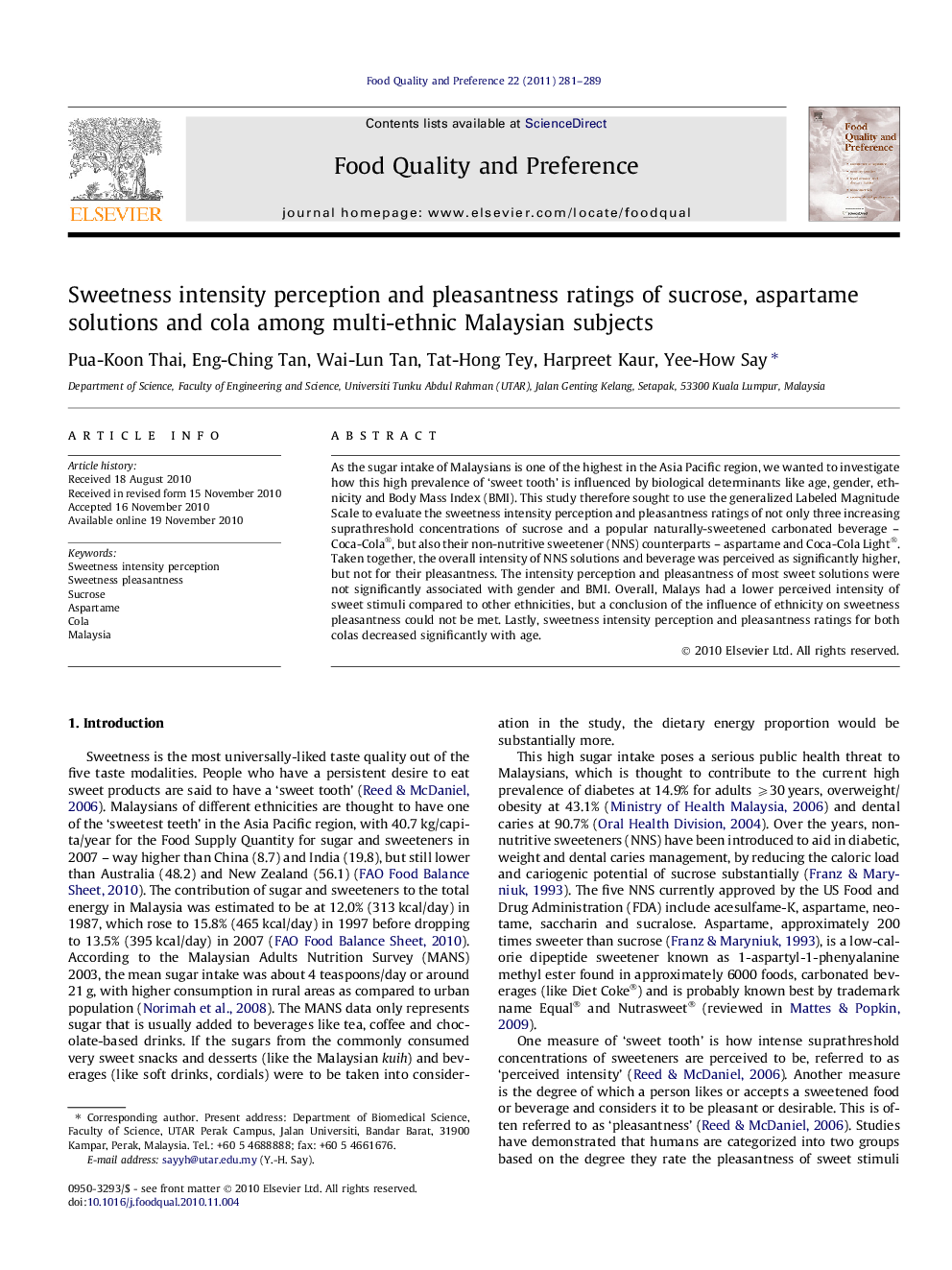| Article ID | Journal | Published Year | Pages | File Type |
|---|---|---|---|---|
| 6261447 | Food Quality and Preference | 2011 | 9 Pages |
As the sugar intake of Malaysians is one of the highest in the Asia Pacific region, we wanted to investigate how this high prevalence of 'sweet tooth' is influenced by biological determinants like age, gender, ethnicity and Body Mass Index (BMI). This study therefore sought to use the generalized Labeled Magnitude Scale to evaluate the sweetness intensity perception and pleasantness ratings of not only three increasing suprathreshold concentrations of sucrose and a popular naturally-sweetened carbonated beverage - Coca-Cola®, but also their non-nutritive sweetener (NNS) counterparts - aspartame and Coca-Cola Light®. Taken together, the overall intensity of NNS solutions and beverage was perceived as significantly higher, but not for their pleasantness. The intensity perception and pleasantness of most sweet solutions were not significantly associated with gender and BMI. Overall, Malays had a lower perceived intensity of sweet stimuli compared to other ethnicities, but a conclusion of the influence of ethnicity on sweetness pleasantness could not be met. Lastly, sweetness intensity perception and pleasantness ratings for both colas decreased significantly with age.
Research highlights⺠Sweetness intensity perception and pleasantness not associated with gender and BMI. ⺠Malays had lower perceived intensity of sweetness compared to Chinese and Indians. ⺠Sweetness intensity perception and pleasantness decreased with age for cola.
